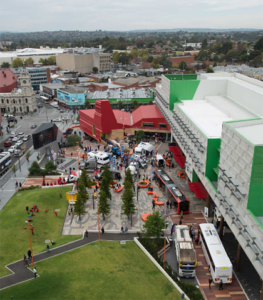Cultural diversity key in urban renewal – study
A new study shows how promoting cultural diversity can play an important role in achieving the successful revitalisation of declining urban communities.
The study focused on Dandenong, in Melbourne’s south east, which has undergone an urban renewal program over recent years that has embraced the need to consider the areas diverse communities.
 The researchers the Australian National University’s Crawford School of Public Policy found that supporting difference and tolerance without imposing assimilation and recognising importance of cultural pluralism were key factors in a successful urban development policy.
The researchers the Australian National University’s Crawford School of Public Policy found that supporting difference and tolerance without imposing assimilation and recognising importance of cultural pluralism were key factors in a successful urban development policy.
The study said the Dandenong experience potentially paved the way for other cities to follow suit.
Titled ‘Central Dandenong: Australia’s comeback city? Lessons about revitalisation for diverse places’, the study examined urban revitalisation policy, and identified specific aspects of planned revitalisation that reinforce cultural diversity.
In terms of positive effects, the research found a series of characteristics that create everyday encounters and lasting interactions between people.
“In doing so, it showed that revitalisation could be used to build intercultural understanding and a sense of belonging in this highly diverse area, where 72 per cent of the population was born overseas, mostly from Afghanistan, India, Sri Lanka, China, and Pakistan,” lead author Professor Helen Sullivan said.
In the 1990s, central Dandenong was in decline. But, over the past decade and a half, this trend has been halted and in some areas reversed.
The researchers identified key elements in this revitalisation, including strong roles for both public sector and non-government participants.
Importantly, the approach has delivered new opportunities for the culturally diverse local community.
“One important characteristic is housing. Central Dandenong’s revitalisation experience demonstrates an increase in overall dwellings, and housing types that are more diverse compared to the rest of Greater Melbourne, allowing flexibility and affordability for residents,” Prof Sullivan said.
“The average cost of rent for residents in Central Dandenong has remained ‘affordable’ – below 30 per cent of household income. Access to public transport, grocery stores/market, social services, and local employment means the overall cost of living is affordable,” she said.
Along with housing, the revitalisation process focused on revitalising the public spaces. It provided an increasing number of spaces that offer opportunities for building familiarity and sociability among residents.
They include a library, neighbourhood houses, a market, retail outlets, grocery stores, and coffee shops, universities, and TAFE facilities. There is also a Pop-up Park, civic square, a theatre, and cultural precincts. Multiple interviewees commented on an improved sense of safety for Culturally and Linguistically Diverse (CALD) women as a product of the revitalisation effort.
“State and Local Governments also fund important local events, such as a Food and Wine Festival, or cultural and religious festivals. This too can serve to create opportunities for interaction within diverse communities,” the report said.
“Also crucial to revitalisation have been employment, education and training. More people are accessing training opportunities in technical or other further education institutions. Some 8.5 per cent of the Dandenong population were in education in 2011, compared to 11.5 per cent in 2016,” it said.
“Multiple community-based organisations, including the library, church groups, and non-profit organisations offer English language classes as well as support in the search for employment, and this reflects the benefits of cultural pluralism in the revitalisation process,” the study said.
Funded by the Economic and Social Research Council (UK) and part of an international study of eight cities, the study concluded that cultural pluralism is an important dimension to be considered when embarking on planned revitalisation in Australian urban centres.












